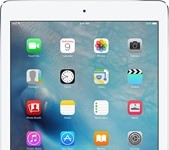Courtesy “NetWorker,” a regular poster to the eBook Community list, here’s some great advice on buying e-book gizmos. – David Rothman
1. Higher screen resolutions are better than lower screen resolutions. When I purchased my Compaq, the Palms and Handsprings were still limited to 160 x 160 pixels whereas the Compaq had a resolution of 320 x 240–more than double the resolution, not considering the increased screen size (the Palms had an aspect ration of 1 to 1, while the Compaq had a ration of 2.4 to 3.2). The difference while reading was dramatic. The newer Palm Tungsten T3 has a screen resolution of 320 x 480, more than 4 times the resolution of the earlier Palms, and I seem to have heard of PDAs with even higher resolutions, perhaps approaching VGA resolution (640 x 480). Go for the highest resolution you can afford.
2. Color is better than monochrome. Many people think that because books are printed in black and white, that is all that is necessary for an e-book device. This is simply not my experience. Most monochrome device are not black and white, they are black on pale green. Even if you like black on white, only color screens can really give it to you. Plus, by choosing the right colors (such as green on black) it minimizes the amount of light given off when you’re trying to read in bed with your significant other when the lights are off.
3. Size matters. With the expansion sleeve my iPaq is just barely small enough, and I frequently remove the sleeve when carrying it around. One of the prime advantages to e-book devices is your ability to carry it with you and use it on the go, whether riding mass transit or standing in line at the DMV. Be sure that the device you choose can fit easily into a pocket or purse; don’t assume you will only use it when curled up in the easy chair.
4. You must look at the physical device you are considering buying. My iPaq doesn’t wash out in bright light like my wife’s Cassiopeia, but her screen is a bit crisper. I suspect many people feel monochrome screens are acceptable only because they haven’t looked at them closely next to color screens. Don’t use M$Reader as a comparision tool, as the BlurType(tm) technology [ClearType in NetWorker’s vocabulary] used in that product can make characters look fuzzy, and the acceptability of the print depends a lot on how the Red, Green and Blue sub-pixels are oriented. Look at the screens in bright light, and in dark rooms (my iPaq is bright enough, even at its lowest setting, to be used as a flashlight–which is not a good thing when my wife is trying to sleep). Only by holding a machine in your hand can you decide if it is too small or too bulky. Only by looking at it can you decide if a low resolution is good enough for you, or if you can live with a monochrome screen. Just remember that you may very well be using this same device 5 years from now, and five years of a nagging dissatisfaction can be a very long time.
Lastly, give up on being able to read PDF documents on your handheld. Adobe does manufacture a reader for both the PocketPC and the Palm, but the reports I have heard say that it really only works if you’re desperate. If you’re buying a handheld device to read PDF files you’d better be very sure that it is acceptable to you before you put your money down.


































I’m seriously looking at Dell’s X51v. It has a 3.7 VGA screen, one of the bigger, higher resolution PDAs out there.
I have an Axim x50v, and I find the physical size (even with the 640-480 resolution) to be inadequate. My criteria is having the greatest number of words on a single page, so I’m not having to constantly turn the page. Using that criteria, I find the monochrome of ebookwise to be totally adequate. I get more real estate.
Which brings me to another point. How easy is it to turn the page. I find the Axim forward/back button just too difficult to use when reading text. (I also have some problems with MS Reader, settings, but that’s another story). The ebookwise form factor is lovely for turning pages. It fits really great into your hands. Everybody I show this device to find this to be the most engaging thing to it.
I agree that color adds value to the textual experience. But not yet for ebooks. Public domain texts are not really adorned with illustrations or color yet. I’m sure some enterprising comic book artist will figure something out.
I’ll politely disagree on the color vs. monochrome. I
Great discussion! Guess I would add (and second) just a few things: For reading in non-Western European languages/alphabets, be sure the device easily supports Unicode and/or other fonts. I ran into a number of font problems with the Palm OS (may be improved now with more recent models) and found Pocket PC’s to work much better with non-roman or E. European alphabets. Pocket pc’s do non-western fonts extremely well.
For me, color is important – I often create my own ‘personal’ Mobi-pocket e-books from Wikipedia and other internet content and these often include illustrations / maps. Also, some downloaded e-books from our local libraries here (Seattle area) also now have color illustrations, which look great on a color screen. Great service
Form-factor really can’t be emphasized enough — last week bought a new IPAQ 1950rx (absolutely a great e-book reader btw!) with a good resolution of 320×240 but am selling my older, far more expensive IPAQ 4705 which has a gorgeous VGA screen of 640×480 – it was just too big to lug around / heavy to hold up! I take the cheaper / smaller reader everywhere and hardly know I’m carrying it. I’m no weakling, but even a few extra ounces can be crazy-making when you use your reader and travel a lot.
Finally, this may be way off-topic, but with Wi-fi capability, besides e-books, increasingly I use my IPAQ to read online e-documents (Wikipedia, web pages, articles, news, RSS, slideshows etc.) so wifi capability could be important to consider depending on your needs/preferences for a reader.
Great discussion, mates – always feels so good to find kindred spirits! – Jake / UW Libraries, Seattle
I’d say resolution is important up to a point. The eb-1150 has a fairly low resolution, but is generally sufficient for the text being displayed. The big problem I have with using PDAs is the small screen size, as Robert Nagle says. But having used a PDA with 320×480 resolution vs one with 640×480, the difference is big, especially on color displays.
On that topic, however, I’d readily give up color to get a higher resolution, a good dpi, and a longer battery life.
networker said:
> Lastly, give up on being able to
> read PDF documents on your handheld.
well, i’m no fan of the .pdf format…
but i’d think that if you make the .pdf
specifically with your machine in mind,
in regard to fontsize and window-size,
it will work just fine in those respects…
(but i do understand that the acrobat
app itself might still run very slowly…)
since even .html content often needs
to be “tweaked” to port it to a p.d.a.,
doing this “special” formatting for .pdf
doesn’t seem to be too unreasonable…
-bowerbird
I have an ebookwise reading device and it is really great. I love to hold it, the screen is easy to read, the only problem is the lack of books I want to read. The ebookwise store is really really lacking in mainstream books and there are books I want to buy that are avaible in other formats, but I can’t read them on my ebookwise device.